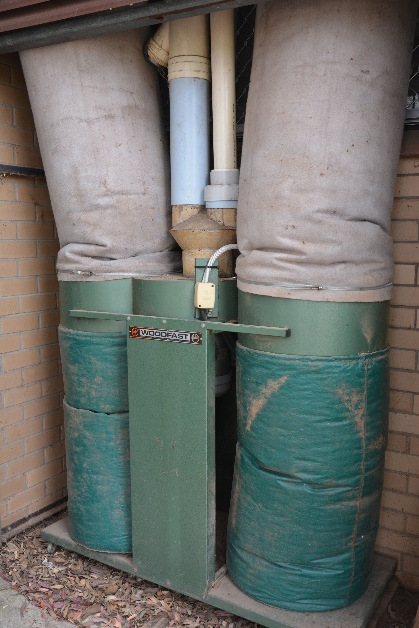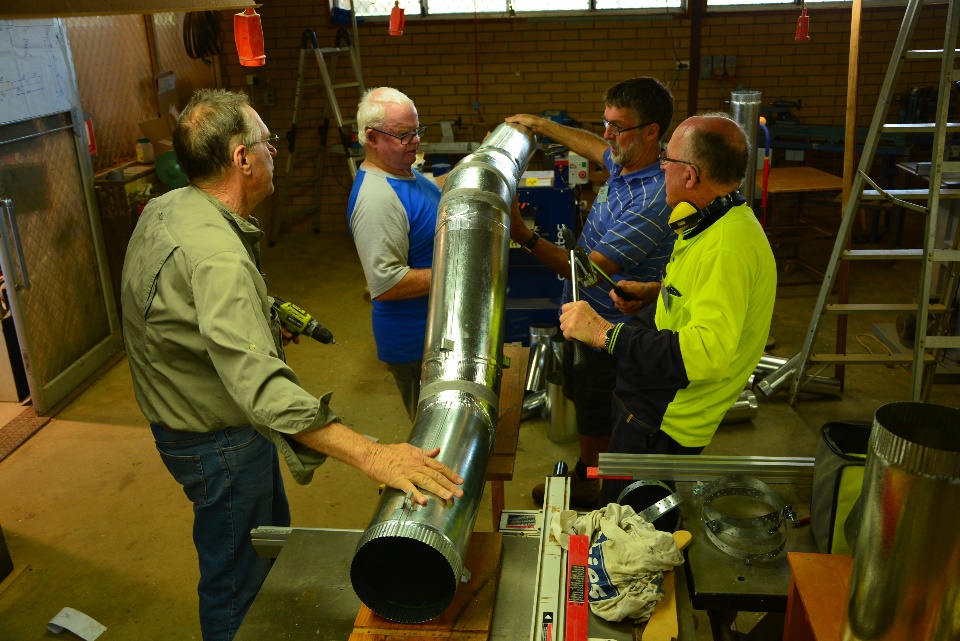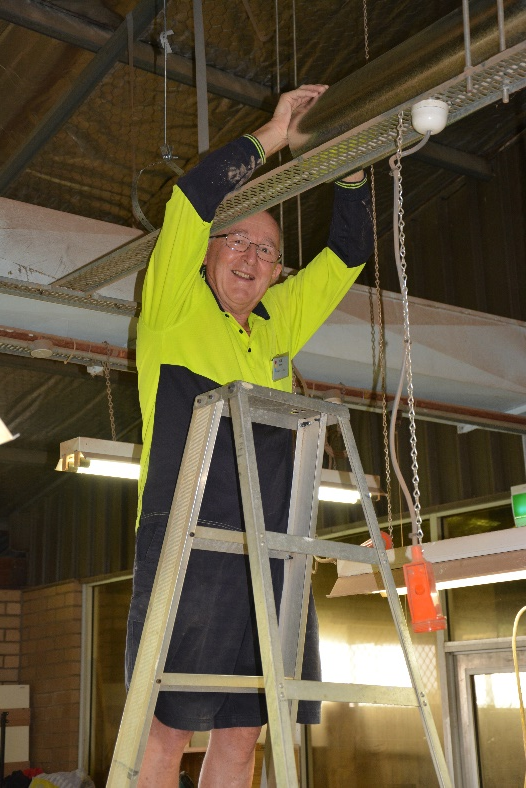Estate Planning Talk Followup
Following on from the excellent talk given by Winona Page of Harris Lieberman Solicitors on the subject of Estate Planning, we are able to publish here some of the web links that Winona supplied at the talk. (just click on the relevant subject line)
- In New South Wales:
- In Victoria:
- General legal advice
- Australian Tax Office
- Contested Wills
Pen Sets for Rotary
The President of Albury North Rotary Club has asked the Shed if it could make a production run of about 40 pen sets suitable for presentation to their guests.
The Shed had previously made a similar small production run for their own use.
The pens were made on a wood turning lathe by Shed member Peter Meany, while the cases were hand crafted by Shed member Kevin Scanlon. The laser engraving of the pen cases called upon Shed member Howard Lowndes to bend his mind around putting the CNC code together to drive the Laser Engraver for the final touch.
It's through doing specialist small production work such as this, bringing together a diverse range of personal skills, that the Shed is able to attract donations to continue to provide services to our members.
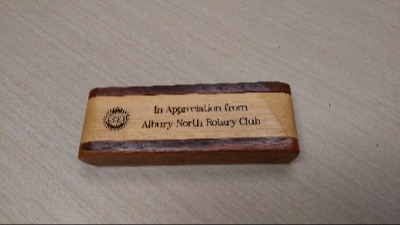
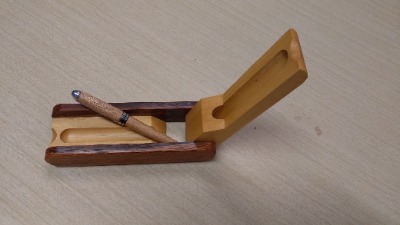


Xmas Lunch 2024
The Shed recently held its Xmas lunch at the Thurgoona Golf Club with a strong attendance by Shedders and their partners.



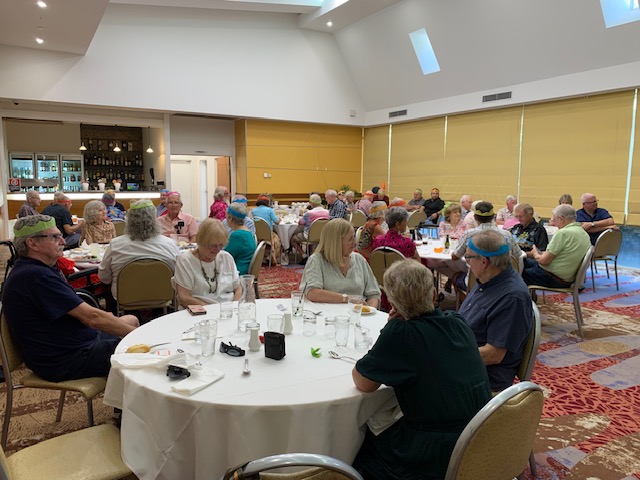

Shuffleboard
Peter went to great lengths to build a Shuffleboard and then showed the Shed how to use it
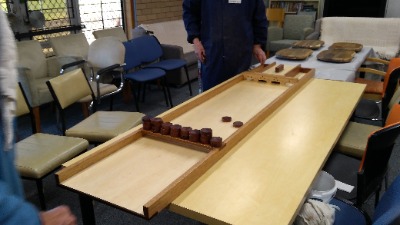
BUILDING OUR OWN DUST EXTRACTION SYSTEM
The decision to build own dust extraction system came about in 2017 when we were successful in obtaining a grant from the Department of Veterans’ affairs to purchase a new thicknesser and dual drum sander to replace our existing units. At the time, the shed’s dust extraction system consisted of a hotch-potch arrangement, using a combination of individual portable dust extraction machines, two large old dust extraction machines that were located outside of our building, and a couple of old vacuum cleaners. As part of the planning of where to locate the new thicknesser and drum sander it soon became clear to us that we needed to drastically improve our existing dust extraction arrangement.
The first hurdle then was to convince the shed committee of what was required for a new efficient and safe dust extraction system, and with many “so-called” experts to advise us, shedders will know what I mean, it eventually required the help of our local Wodonga TAFE to provide the expertise we really needed. And then things started to flow. First, we needed to do a plan of the shed layout that included our existing equipment as well as the new equipment. Also, as part of this planning we needed to do some calculations on the extent of suction needed to not only deal with the two new items of equipment but also our existing jointer, linishers, wood lathes, etc.
Questions then arose such as to:
-
Would we need a new single dust extraction unit that could handle all of our equipment knowing this would be very expensive and outside our budget?
-
But then what was going to happen to the two old dust extractions units that sat outside and how good were they?
-
How much of the new system could we build ourselves and what tools, materials and equipment would be required?
-
Did we have the expertise within our members to do the job ourselves?
To get us underway we took photos of the two existing dust extraction units that were manufactured by Woodfast of Adelaide. One was a dual bag unit, the other a single, and we had no idea of their suction capabilities. The photos and other information on the two units were sent over to Woodfast and within days we had our answers. We found that neither unit was functioning properly and that if we fixed the problems the two units would be more than capable to run our whole new system thus saving us a heap of money.
Our dual bag unit had a marvellously constructed inlet funnelling arrangement, beautiful bit of metalwork, except that by volume, it meant that two inlet PVC pipes were trying to force the dust particles into a smaller opening at the top of the two drums. As for the other old unit the inlet PVC piping had been wrongly installed and in addition the suction fan was rotating the wrong way. Had it ever worked properly? I had my doubts. Woodfast also advised that we should purchase new microfibre bags as the old bags had gone hard over time from being washed out. Seems these microfibre bags should never be washed out as this affects how the material breathes.
The next decision was to prepare a budget for this mighty project and to decide should we use metal instead of PVC piping. The decision came down to cost and efficiency. The metal piping was by far the dearest however the PVC was less efficient, caused by dust particle build up, with the added potential for static electricity fires. The decision to build in metal came about when we started pricing materials as we came across a metal fabrication plant, Steelfab in South Albury, that could supply what was required at a very reasonable cost. The piping diameters required were 4, 6, 7 and 8-inch with the smaller diameter piping used the furthest from the extraction units. As regards equipment needed to join the metal piping, we purchased a metal crimping tool, lots of pop rivets, duct tape, and an appropriate joint sealant. In addition, we were loaned a four-wheeled adjustable height platform for the overhead work.
The layout and design of the system required the machinery that generated the larger wood particles, e.g. the jointer, to be located closest to the dust extraction units and those that generated the smaller dust particles, e.g. drop saw, located the furthest away. The two existing dust extraction units were “reconfigured” to bring them up to full efficiency and this allowed us to come up with a system that had two main dust extraction units instead of just one. The project then proceeded without too many hiccups although we had to close the woodworking room for a few weeks to allow the project team get on with the installation.
So overall we finished up with a very efficient dust extraction system that cost us in the order of $4500 overall. A number of local sheds have visited us since to inspect our system that we feel justly proud of.
Written by Ron Lutton
Project Co-ordinator (and gopher)
May 2024


